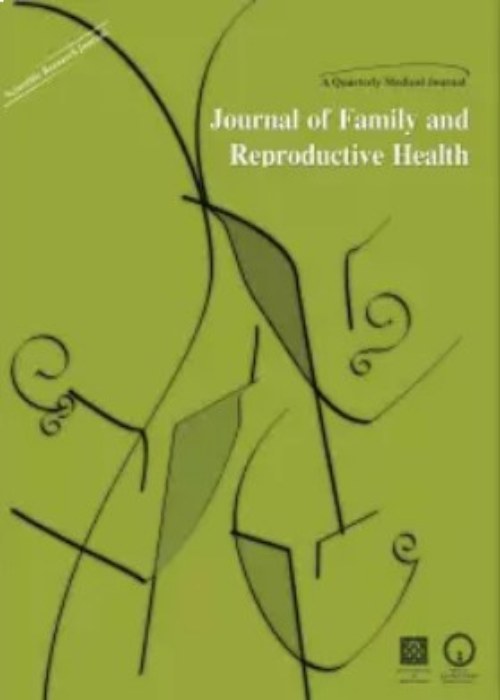فهرست مطالب
Journal of Family and Reproductive Health
Volume:3 Issue: 4, Dec 2009
- تاریخ انتشار: 1389/06/01
- تعداد عناوین: 5
-
Page 101The hypothalamo-pituitary-adrenocortical (HPA) axis is a critical adaptive system that maximizes survival potential in the face of physical or psychological challenge. The principal end products of the HPA axis, glucocorticoid hormones, act on multiple organ systems, including the brain, to maintain homeostatic balance. The brain is a target of stress, and the hippocampus is the first brain region, besides the hypothalamus, to be recognized as a target of glucocorticoids. These anatomical areas in brain are limbic system, and in particular the hippocampus, medial prefrontal cortex (mPFC) and amigdal that have multiple control points in regulation of the hypothalamic–pituitary–adrenal (HPA) axis. The studies show the prefrontal cortex (PFC) plays an important role in the regulation of stress-induced hypothalamic–pituitary–adrenal (HPA) activity and regulation of gonadal function in men and women is under the control of the HPA. This regulation is complex and sex steroids are important regulators of GnRH and gonadotropin release through classic feedback mechanisms in the hypothalamus and pituitary gland. Chronic stress can have a deleterious effect on the reproductive axis that, for females, is manifested in reduced pulsatile gonadotropin secretion and increased incidence of ovulatory abnormalities and infertility. The limbic–hypothalamic–pituitary–adrenal (LHPA) axis suggests a functional role for gonadal steroids in the regulation of a female’s response to stress.
-
Page 109ObjectiveTo study the association between social, demographic, cultural and maternal care practice variables and obstetric fistula status in Ethiopia.Materials And MethodsThe most recent Ethiopia Demographic and Health Survey conducted in 2005 is used to study the association between social, demographic, cultural and maternal care practice and obstetric fistula. We use both univariate and bivariate analyses to describe the association between the selected variables on obstetric fistula status.ResultsA number of social, demographic and maternal care practice variables are found to be significantly (p<0.05) associated with obstetric fistula status. These include level of education, age at first birth, place of residence, antenatal services and place of delivery.ConclusionThe study results emphasize the significance of both treatment and prevention activities in eradicating this highly preventable health condition of women in Ethiopia.
-
Page 117ObjectiveHigh prevalence of tobacco consumption in childbearing ages is an important topic of consideration as its ill effects have influences on fertility. Worldwide studies have shown that general knowledge on fertility issues is low. Aim of the current study was to assess tobacco harm knowledge and attitude in infertile couples referring to the Avicenna center.Materials And MethodsThis was a cross-sectional study. All Avicenna fertility clinic's new patients with infertility complain between November of 2007 and February 2008 was included. Information was collected trough standard knowledge and attitude questionnaire.ResultsAmong 684 individuals (342 couples), the mean score of knowledge and attitude was 0.49±0.79 (from a total of 4), 19.1±2.70 (from a total of 24). The mean knowledge score among women and men was 0.44±0.73, 0.54±0.84, respectively. The mean of attitude score in women and men was 19.35±2.55, 18.85±2.82, respectively. Significant correlation between age, gender, education and tobacco experience with knowledge was not found. Yet, attitude was significantly more appropriate in women, the educated and inexperienced tobacco usage (P=0.001, P=0.001, P=0.03, respectively).ConclusionIn the population studied, attitude was appropriate but level of knowledge was low and this suggests more steps should be taken to improve the knowledge.
-
Page 123ObjectiveThis study aimed at contributing to the promotion of positive communication between parents and children in order to help the children establish individual values and make sexually healthy decisions.Materials And MethodNinety six out of 300 in-school adolescents previously interviewed were selected for follow-up interview with their respective parents/guardians using a simple random sampling technique. Semi-structured questionnaires were administered on the parents/guardians after obtaining their informed consents.ResultsOf the 93 respondents that freely discuss with their children, the frequencies were: regularly (68.8%); occasionally (28.0%); and (3.2%) could not recall. More of those that discussed about sexuality issues were younger with a mean age of 45.5 years compared to 48.3 years for those who did not (χ2 = 40.91, df = 50, p < 0.05). Similarly, younger respondents perceived sexuality education more important than older respondents (χ2= 61.81, df = 75, p < 0.05). Very few discussed HIV/AIDS with their male children while none had such discussion with their female children. About one-quarter of the parents did not believe in children knowing about contraceptives, stating that such exposure is unnecessary because it will initiate the children into early sexual activities. This communication gap was more evident when about one-third of the respondents insisted they will not counsel their children about contraceptives.ConclusionsParents should be assisted in developing specific knowledge and skills to support their adolescents’ sexual decision making. Intervention programs should target particularly the older ones, who are usually not too comfortable in discussing issues relating to sexuality with their children.
-
Page 129ObjectiveBasal FSH levels reflect ovarian response and more formed embryos. We investigated a reliable FSH range to retrieve more oocytes and embryos.Materials And MethodsTwo hundred patients in ART cycles underwent this study from Apr 2007 to Sep 2008. Patients were divided in three groups based on value of FSH: group A≤8 IU/ml, 8 IU/ml < group B≤10 IU/ml, group C>10 IU/ml and results of ART cycles were compared with each other.ResultsRetrieved and fertilized oocytes and transferred embryos in group A differed significantly in comparison with group B and C (p<0.05), but pregnancy rates in three groups were comparable.ConclusionIn our study the reliable range of FSH level to predict more retrieved oocytes and embryos was ≤8 IU/ml.


